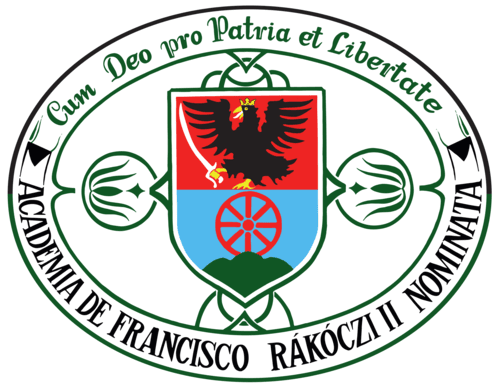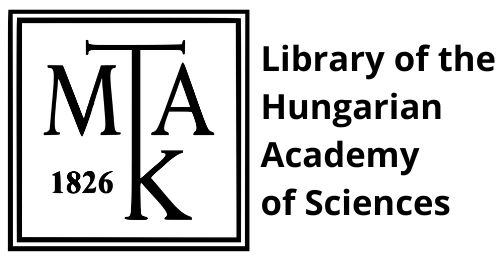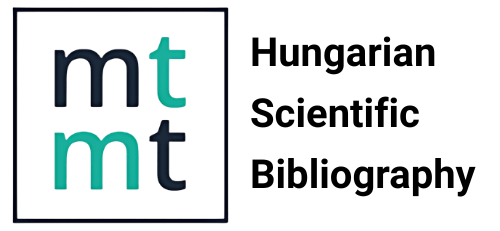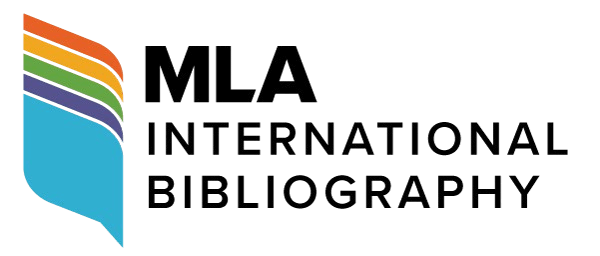The Isoglosses of the Diphtong Use in the Palóc Dialect Group in Space and Time
DOI:
https://doi.org/10.58423/2786-6726/2022-2-85-106Keywords:
isogloss, dialect, dialectology, diphthong, Palóc, language changeAbstract
In recent years I have done researches in the Palóc dialect area. In this region the diphthongs were used by the speakers of a larger area in earlier eras of Hungarian language history. In some dialect groups and local dialects of this region even in the 19th century also reported diphthong pronunciation. At the end of the 20th century and now most of the Palóc speakers do not pronounce diphthongs, this data is demonstrated in language tests. It can be detected divergent linguistic movements. We can perceive those different phenomena on both sides of the Trianon border in the earlier Nógrád county (the borderline between Hungary and Slovakia is here at the present). The geographical boundary line marking the area in which a distinctive linguistic feature commonly occurs. The isogloss means a geographical dialect continuum. In my study, I try to draw the temporal and spatial boundaries of diphthong use and disappearance. Sometimes these differences will be larger, sometimes smaller, but they will be cumulative. My corpus shows linguistic changes from the Middle Age to the present. My analysis was done by the following written and oral data: 1. The Code of Gömöry from the 16th century – the nun who copied it (her name: soror Katherina, Legéndy Kató), comes from the Palóc dialect region from the village Legénd. My resources contain the descriptions of the speech and customs of the Palóc speakers from the 18th and the 19th century (Matthias Bel 1735, from the northern Palóc region; Fábián Szeder 1819, the first and the following researches in the area along the river Ipoly; Imre Hollók 1836, from the region of Gömör; István Szabó 1837, in the valley of Karancs; Antal Reguly 1857, notes on her trip in the land of Palóc ethnicity; Gyula Pap 1865, from the region of Salgó; Sándor Pintér 1880, her collections in the western central region of the Palóc; Gyula Istvánffy 1890–1900, her collection of the folk poetries in the area of Mátra); 3. Atlas of the Hungarian Dialects from the middle of the 20th century; 4. the data from the atlases of dialect islands from Slavonien (at the present: Croatia); 5. Dialect Atlas of Medvesalja; 6. and language databases from the 20th and 21th century, my own research from a village Karancslapujtő in the Palóc area. Based on the data, I try to present the isogloss of the spread of diphthongs in space and time in the Palóc dialect area groups.
References
Bárczi Géza 1975. Erdélyi Zsuzsanna „Hegyet hágék” c. műve kapcsán [In Connection with the Work of Zsuzsanna Erdélyi „Hegyet hágék”]. Vigília [Vigil], 40, 80−82. o. (In Hungarian).
Bél Mátyás 1735. Notitia Hungariae novae historica geographia… [Owerview of the New Historical Geography of Hungary…]. Bécs. http://real-r.mtak.hu/541/1/Notitia_Hungariae_novae_historico_geogra_1.pdf (2021. 09. 18.)
Benkő Loránd 1957. Magyar nyelvjárástörténet [Hungarian Dialect History]. Tankönyvkiadó. Budapest (In Hungarian).
Chambers, J. K. – Trudgill, Peter 1998. Dialectology. Cambridge: Cambridge University Press.
Deme László – Imre Samu szerk. 1968−1976. A magyar nyelvjárások atlasza 1−6. [Atlas of the Hungarian Dialects]. Akadémiai Kiadó. Budapest (In Hungarian).
Erdélyi Zsuzsanna 1974. Hegyet hágék, lőtőt lépék. Archaikus népi imádságok [Archaic Folk Prayers]. Szerk. Kanyar József, előszó Ortutay Gyula. Somogyi Almanach. Kaposvár (In Hungarian).
Erdélyi Zsuzsanna 1976. Hegyet hágék, lőtőt lépék. Archaikus népi imádságok [Archaic Folk Prayers]. Előszó Ortutay Gyula. Magvető Kiadó. Budapest (In Hungarian).
Erdélyi Zsuzsanna 1978. Hegyet hágék, lőtőt lépék. Archaikus népi imádságok [Archaic Folk Prayers]. Előszó Ortutay Gyula. Magvető Kiadó. Budapest (In Hungarian).
Erdélyi Zsuzsanna 1999. Hegyet hágék, lőtőt lépék. Archaikus népi imádságok [Archaic Folk Prayers]. Kalligramm Kiadó. Pozsony (In Hungarian).
N. Fodor János 2008. Szuhogy történetéről és nyelvjárásáról [About the History and the Dialect of Szuhogy]. In: Mazurka Károly: Szuhogyi palóc tájszótár [Dialect Dictionary of Szuhogy]. Magyar Nyelvtudományi Társaság − Tinta Könyvkiadó. Budapest. 9–16. o. (In Hungarian).
Gerstner Károly 2018. Hangtörténet [The History of Phonemes]. In: Kiss Jenő–Pusztai Ferenc eds. A magyar nyelvtörténet kézikönyve [Handbook of Hungarian Language History]. Tinta Kiadó, Budapest. 103−128. o. (In Hungarian).
Goossens, Jan 1977. Die Begrenzung dialektologischer Problemgebiete [The Delimitation of Dialectological Problem Areas]. In: Goossens, Jan: Deutsche Dialektologie [German Dialectology]. Walter de Gruyter Verlag. Berlin−New York. 53–61. o. (In German).
Gréczi-Zsoldos Enikő 2007. Nógrád vármegye nyelve a XVII. században [The Language of Nógrád County in the 17th Century]. Nógrád Megyei Levéltár. Salgótarján (In Hungarian).
Gréczi-Zsoldos Enikő 2016. Egy palóc település, Karancslapujtő generációinak nyelvhasználata a 21. század elején [The Language Use of the Generations of a Palóc Village, Karancslapujtő at the Beginning of the 21st Century]. In: Balázs Géza–Veszelszki Ágnes szerk. Generációk nyelve. Tanulmányok [Language Use of the Generations. Studies]. Budapest: ELTE BTK Mai Magyar Nyelvi Tanszék – Inter – MSZT. 365–372. o. (In Hungarian).
Gréczi-Zsoldos Enikő 2017. Nyelvjárás és attitűd egy palóc faluban a XXI. század elején [The Dialect and the Language Attitude in a Palóc Village at the Beginning of the 21st Century]. In: Hajba Renáta–Tóth Péter–Vörös Ferenc eds. „…ahogy a csillag megy az égen…”. Köszöntő kötet Molnár Zoltán tiszteletére [„…as the star goes in the sky…” Greeting Book in Honour of Zoltán Molnár]. Szombathely: Savaria University Press. 113–120. o. (In Hungarian).
Gréczi-Zsoldos Enikő 2020. Változásvizsgálat egy középpalóc közösség nyelvhasz¬nála-tában [Analysis of Changes in the Language Use of a Community in the Central Palóc]. In: Heltai János Imre–Oszkó Beatrix szerk. Nyelvi repertoárok a Kárpát-medencében és azon kívül. Válogatás a 20. Élőnyelvi Konferencia (Budapest, 2018. augusztus 30. – szeptember 1.) előadásaiból [Linguistic Repertoires in the Carpathian Basin and Beyond. Selection from the Presentations of the 20th Hungarian Sociolinguistics Conference (Budapest, August 30 – September 1, 2018)]. Budapest: MTA Nyelvtudományi Intézet. 154–159. o. (In Hungarian)
Haader Lea–Papp Zsuzsanna publ. and intr. 2001. Gömöry-kódex 1516 [Gömöry Codex 1516]. A nyelvemlék hasonmása és betűhű átirata bevezetéssel és jegyzetekkel [The Facsimile and Literal Transcription of this Literary Remains of a Language with an Introduction and Notes]. Budapest: MTA Nyelvtudományi Intézete. (In Hungarian)
Hollók Imre 1836. Észrevételek a gömöri barkók szójárásáról [Remarks on the Speech of the ’Barkó’ Ethnic Group of Gömör]. Tudománytár [Science Library] 1836/9: 60−64. o. (In Hungarian)
Horger Antal 1897. Ráskai Lea nyelvjárása [The Dialect of Lea Ráskai]. Magyar Nyelvőr [Hungarian Language Guard] 26, 1. 193−202., 2. 245−251. o. (In Hungarian).
Imre Samu 1971. A mai magyar nyelvjárások rendszere [The System of the Hungarian Dialects]. Akadémia Kiadó. Budapest. (In Hungarian)
Istvánffy Gyula 1894a. Tréfás versikék [Funny Verses]. Magyar Nyelvőr [Hungarian Language Guard] 23, 141. o. (In Hungarian).
Istvánffy Gyula 1894b. Tréfás dalok [Funny Songs]. Magyar Nyelvőr [Hungarian Language Guard] 23, 191. o. (In Hungarian).
Istvánffy Gyula 1894c. Tréfás versikék [Funny Verses]. Magyar Nyelvőr [Hungarian Language Guard] 23, 284. o. (In Hungarian).
Istvánffy Gyula 1894d. Tréfás versikék [Funny Verses]. Magyar Nyelvőr [Hungarian Language Guard] 23, 333. o. (In Hungarian).
Istvánffy Gyula 1895a. Párbeszédek [Dialogues]. Magyar Nyelvőr [Hungarian Language Guard] 24, 94−95. o. (In Hungarian).
Istvánffy Gyula 1895b. Tájszók. Mátravidékiek [Local Words from the Region of the Mátra]. Magyar Nyelvőr [Hungarian Language Guard] 24, 288. o. (In Hungarian).
Istvánffy Gyula 1895c. Tájszók. Mátravidékiek [Local Words from the Region of the Mátra]. Magyar Nyelvőr [Hungarian Language Guard] 24, 431−432. o. (In Hungarian).
Istvánffy Gyula 1900. A palóczok [The Ethnic Group: Palóc]. In: Jókai Mór ed. Az Osztrák-Magyar Monarchia Írásban és Képben. Felső-Magyarország [The Austro-Hungarian Monarchy in Writing and Pictures. The Highland of Hungary] 18. Budapest: Magyar Királyi Államnyomda (In Hungarian).
Juhász Dezső 2011. A magyar nyitódó kettőshangzók történetéről a tér és az idő dimenziójában [About the History of the Hungarian Opening Diphthongs in the Dimension of Space and Time]. In: Bakró-Nagy Marianne–Forgács Tamás eds. A nyelvtörténeti kutatások újabb eredményei [Recent Results in the Researches of the History of Language] 6. Szeged: Szegedi Tudományegyetem Magyar Nyelvészeti Tanszék. 123−128. o. (In Hungarian).
Juhász Dezső 2018. A nyelvjárások történetéből [From the History of the Dialects]. In: Kiss Jenő–Pusztai Ferenc eds. A magyar nyelvtörténet kézikönyve [Handbook of the Hungarian Language History]. Budapest: Tinta Kiadó. 314−349. o. (In Hungarian).
Kiss Jenő 2001. A nyelvjárások osztályozása [The Classification of the Dialects]. In: Kiss Jenő ed. Magyar dialektológia [Hungarian Dialectology]. Budapest: Osiris Kiadó. 72–81. o. (In Hungarian).
Kiss Jenő ed. 2001. Magyar dialektológia [Hungarian Dialectology]. Budapest: Osiris Kiadó (In Hungarian).
Malonyai Dezső 1922. A magyar nép művészete. Hont, Nógrád, Heves, Gömör, Borsod magyar népe, a palócok művészete [The Art of the Hungarian People. The Hungarian People in Hont, Nógrád, Heves, Gömör, Borsod, the Art of the ’Palóc’ Ethnic Group] 5. Budapest: Franklin Társulat (In Hungarian).
MDial. = Kiss Jenő ed. Magyar dialektológia [Hungarian Dialectology]. Budapest: Osiris Kiadó (In Hungarian).
MNyA. = Deme László–Imre Samu eds. 1968−1976. A magyar nyelvjárások atlasza [Atlas of the Hungarian Dialects] 1−6. Budapest: Akadémiai Kiadó (In Hungarian).
Cs. Nagy Lajos 2011. Medvesalja magyar nyelvjárási atlasza [Atlas of the Hungarian Dialect in Medvesalja]. Veľké Kapušany: Luminosus n. o. Kiadó (In Hungarian).
Pais Dezső 1971. Hozzászólás Erdélyi Zsuzsanna előadásához (Archaikus és középkori elemek népi szövegekben) [Comment on the Presentation of Zsuzsanna Erdélyi. (Archaic and Medieval Elements in the Folk Texts]. Ethnografia 82, 364−367. o. (In Hungarian).
Pálóczi Horváth Ádám 1821. A’ magyar nyelv’ dialectusairól [About the Dialects of the Hungarian Language]. In: Horvát István: Jutalom feleletek a’ magyar nyelvről… [Studies about the Hungarian Language…] 1. Pest: Trattner Nyomdája. 3−78. o. (In Hungarian).
Pap Gyula 1865. Palóc népköltemények [Palóc Folk Poems]. Sárospatak: Forster R. A Ref. Főiskola (In Hungarian).
Penavin Olga 1984. Horvátországi (szlavóniai) magyar nyelvjárási atlasz [Atlas of the Hungarian Dialects in Croatia (Slavonia)]. Novi Sad: A Magyar Nyelv, Irodalom és Hungarológiai Kutatások Intézete (In Hungarian).
Pintér Sándor 1880. A Palócokról. [About the ’Palóc’ Ethnic Group]. Budapest. (Facsimile: 1995. Szécsény) (In Hungarian).
Presinszky Károly 2011. A szlovákiai magyar nyelvjárások területi egységei [The Areas of the Hungarian Dialects in Slovakia]. In: Szabómihály Gizella–Lanstyák István eds. Magyarok Szlovákiában. Nyelv [Hungarians in Slovakia. Language] 7. Šamorín: Fórum Kisebbségkutató Intézet. 201–217. o. (In Hungarian).
Reguly Antal 1854/1975. Palóc jegyzetei [Notes about the ’Palóc’ Ethnic Group]. Ed.: Selmeczi Kovács Attila. Eger. (Tanulmányok a Palóckutatás körében 1.) [Studies in the Theme of the Palóc-research] (In Hungarian).
Reguly Antal 1854/1994. Magyarországi jegyzetek [Notes from Hungary]. Ed.: Selmeczi Kovács Attila. Budapest: Néprajzi Múzeum (In Hungarian).
Szabó István 1837. Karancs-vidéki palócz nyelv [The ’Palóc’ Dialect in the Region of Karancs]. Tudományos Gyűjtemény [Scientific Collection] 1837/1: 43−66. o. (In Hungarian).
Szeder Fábián 1819. A’ Palóczok [The ’Palóc’ Ethnic Group]. In: Szeder Fábián 2005. A’ Palóczokról [About the ’Palóc’ Ethnic Group]. (Facsimile). Dunajská Streda: Lilium Aurum Kiadó. 5−26. o. (In Hungarian)
Szeder Fábián 1821. A’ Palóczokról eredetekre, és Pannóniába való jövetelekre nézve [About the ’Palóc’ Ethnic Group in view of their Genesis and Coming to Pannonia]. In: Szeder Fábián 2005. A’ Palóczokról [About the ’Palóc’ Ethnic Group]. (Facsimile). Dunajská Streda: Lilium Aurum Kiadó. 27−36. o. (In Hungarian).
Szeder Fábián 1835. A’ Palóczokról [About the ’Palóc’ Ethnic Group]. In: Szeder Fábián 2005. A’ Palóczokról. (Facsimile). Dunajská Streda: Lilium Aurum Kiadó. 37−76. o. (In Hungarian).
Turzó Ferenc 1899. A Nyitravidéki palóc nyelvjárás [The Palóc Dialect in the Region of Nyitra]. Magyar Nyelvőr [Hungarian Language Guard] 27, 448–452. o. (In Hungarian).
Vadnai Rudolf 1872. Nyälvünk’ hangolvadásárul I. Az önhangzók’ olvadása [About the Hungarian Vowels]. Pest: Athenaeum Nyomdája (In Hungarian).
Voigt Vilmos 2018. Soron következő feladatok az archaikus magyar imák kutatásában [New Exercises in the Research of the Archaic Hungarian Prayers]. In: Lengyel Ágnes–Czövek Judit eds. „Kívül aranyos, belül irgalmas…”. Tanulmányok Erdélyi Zsuzsanna emlékére [„Outside is golden, inside is merciful…” Studies to the Memory of Zsuzsanna Erdélyi]. Balassagyarmat: MNM Palóc Múzeuma. 31−37. o. (In Hungarian).
Downloads
Published
How to Cite
Issue
Section
License
Authors retain copyright and grant the journal the right of first publication. The work is simultaneously licensed under a Creative Commons Attribution 4.0 International License (CC BY 4.0), which permits others to share the work with appropriate credit given to the author(s) and the initial publication in this journal.

















